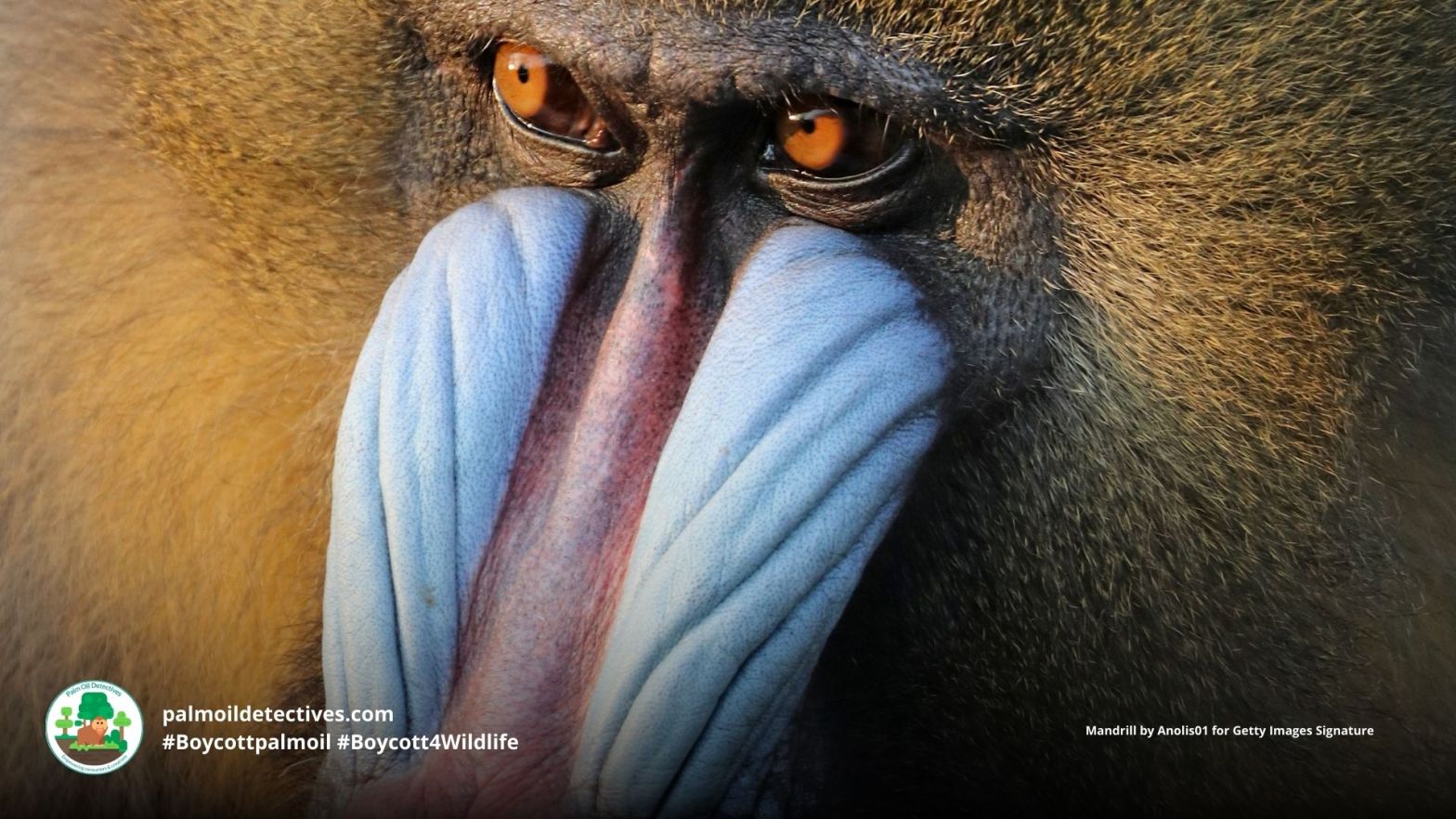Mandrill Mandrillus sphinx
Vulnerable
Extant (resident)
Cameroon; Congo; Equatorial Guinea (Equatorial Guinea (mainland)); Gabon
Magnificent #mandrills are undoubtedly one of the world’s most photogenic monkeys – famous for their brightly coloured and expressive appearance. Their bright blue rumps and vivid red, yellow and pink faces become even more deeply colourful when they’re excited. Males use their extra long canines for self-defence, but exposing their teeth can also be a sign of friendliness. Mandrills are important seed dispersers and a critical part of keeping the ecosystem in balance. These beautiful monkeys are vulnerable from palm oil, meat and cocoa deforestation and intensive poaching. Help their survival and #Boycottpalmoil #Boycott4Wildlife
The largest and most colourful old world monkeys – Mandrills get even brighter coloured when excited. They are #vulnerable from #palmoil #meat #deforestation and #poaching. Help them survive and be #vegan, #Boycottpalmoil #Boycott4Wildlife
Tweet
#Mandrills are known for their vivid and beautifully coloured faces and rumps. They are the vulnerable from #palmoil and #cocoa #deforestation and #hunting. Fight for them every time you shop and #Boycottpalmoil #Boycott4Wildlife
Tweet
Mandrills are large Old World Monkeys endemic to west-central Africa. They are famous for their vividly coloured faces and posteriors. The species is dimorphic, with males having a larger body, brighter colouring and longer canine teeth. They share their genus with another brightly coloured monkey – the drill in the genus Mandrillus.
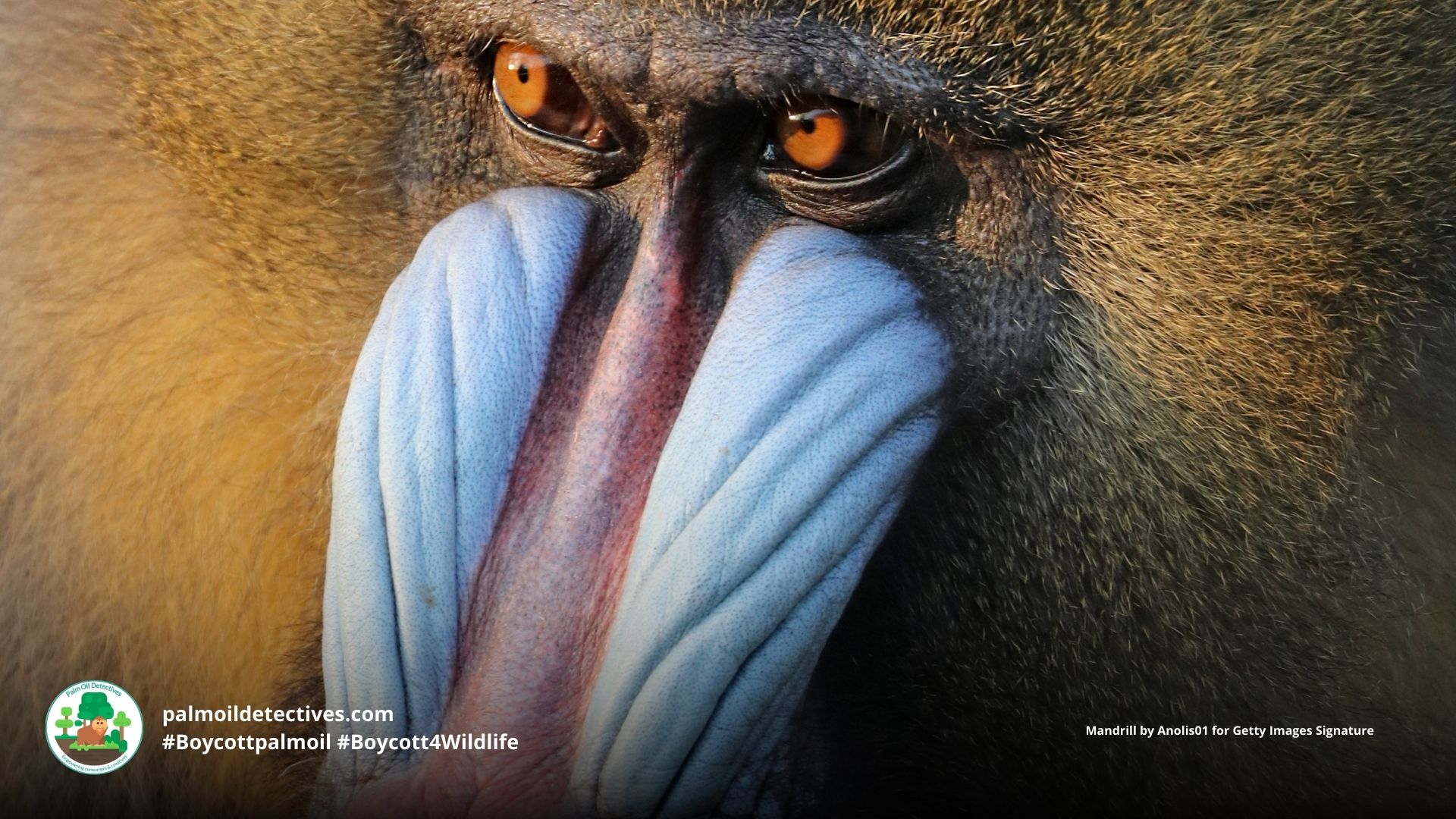
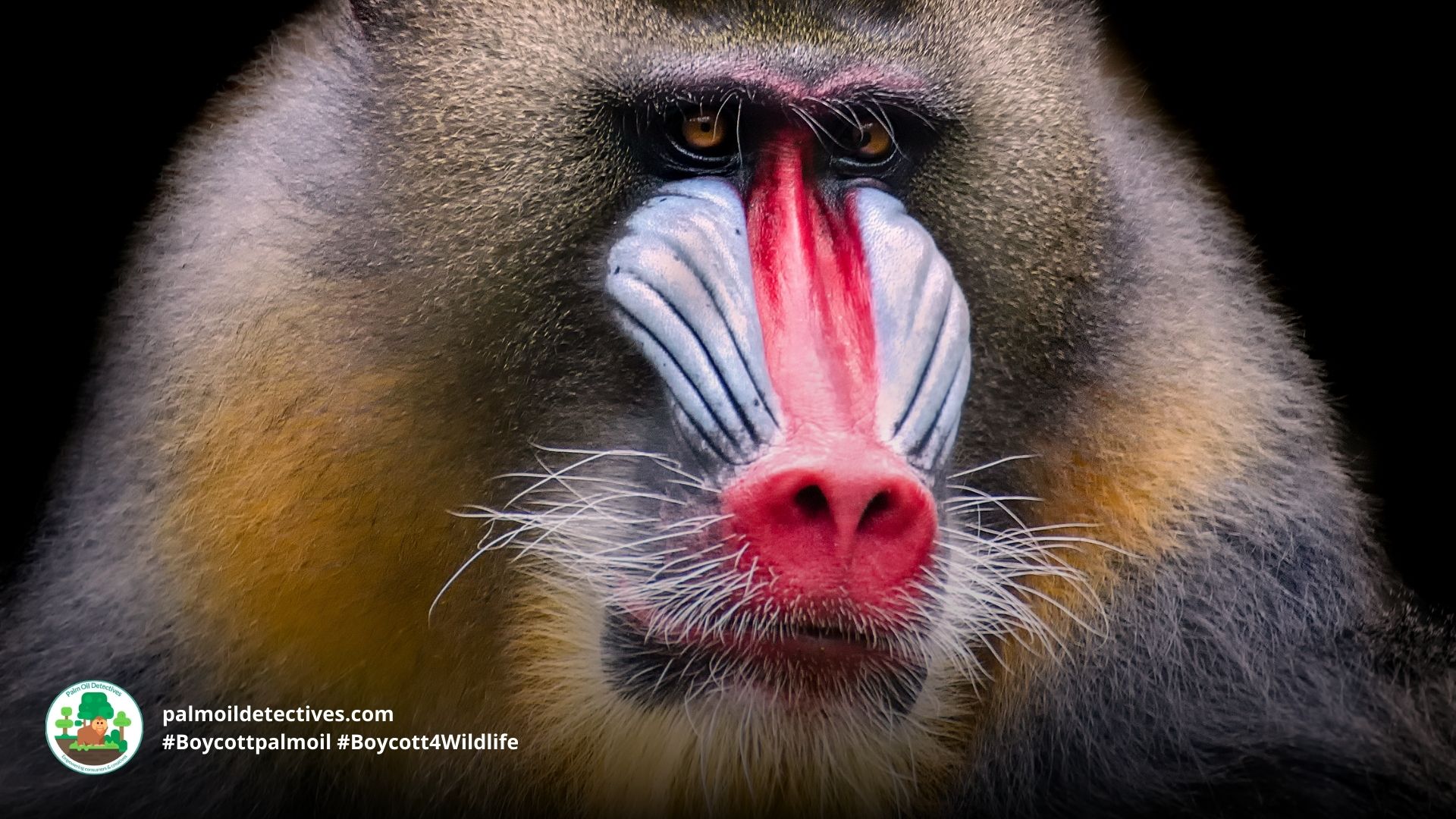
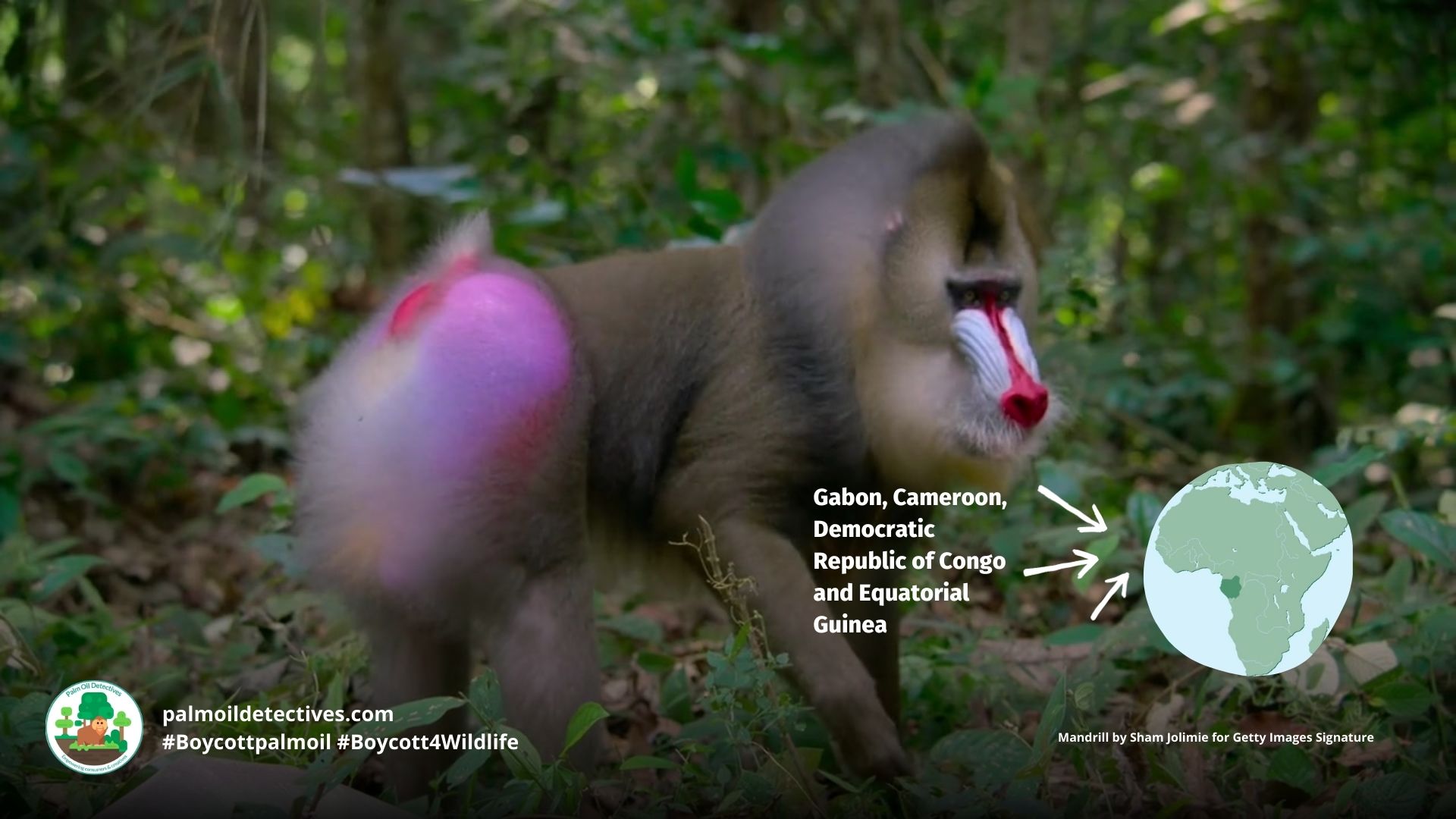
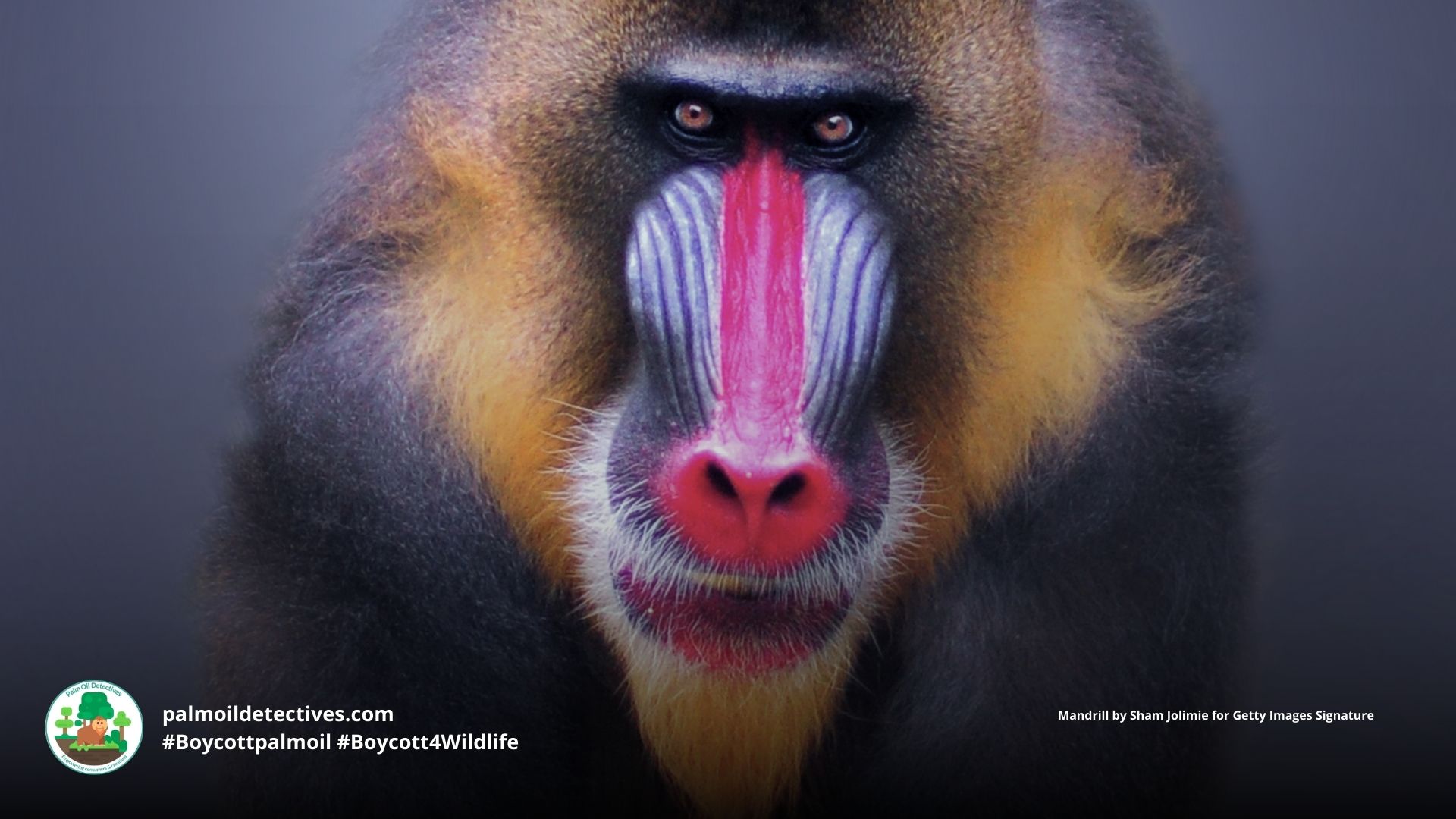
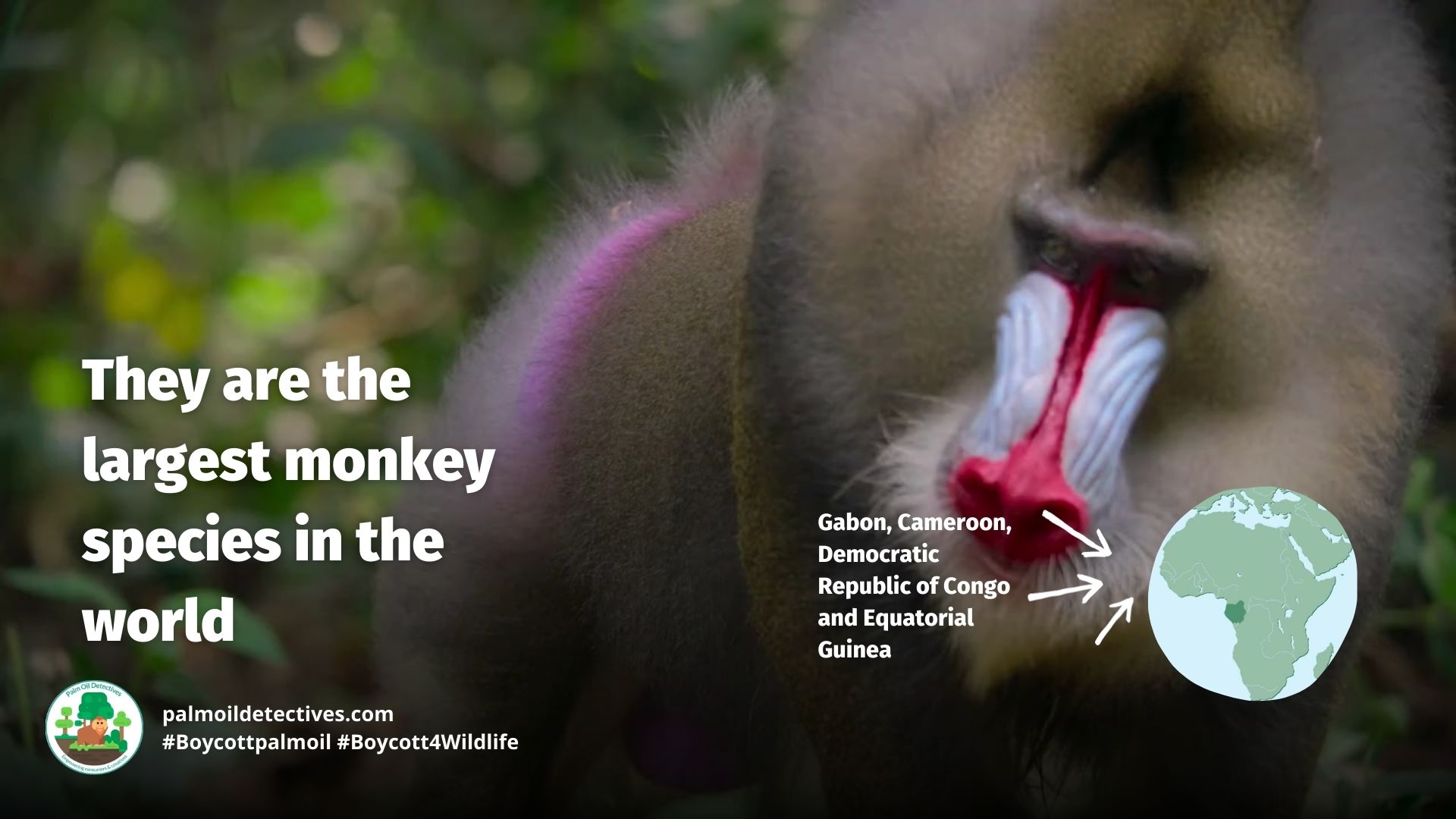

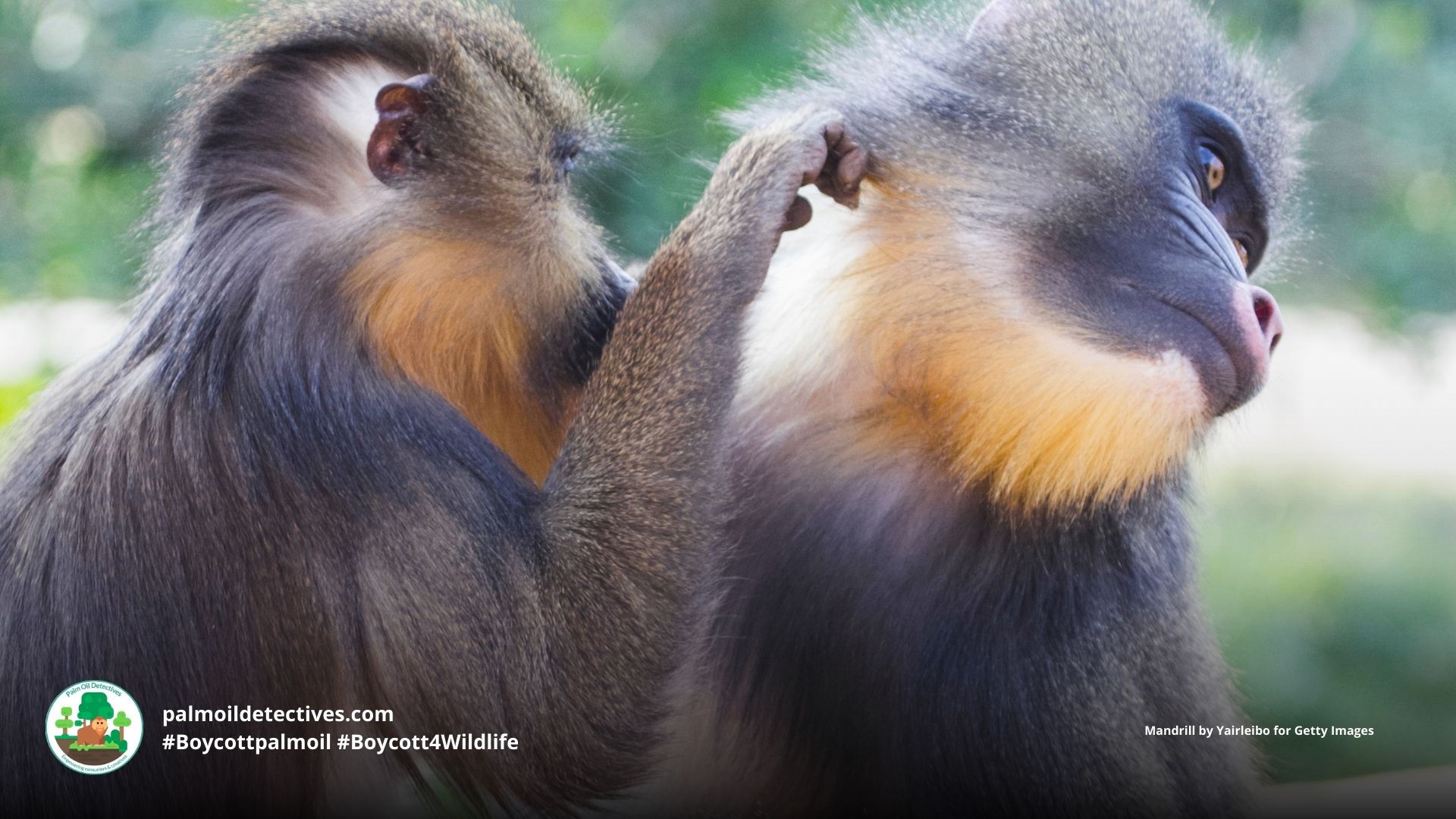

Fast Facts about Mandrills
- When mandrills become excited their colouration becomes brighter with their wrists, ankles and chests becoming vividly illuminated with red hues on their wrists and a brighter blue on their buttocks.
- Their common name ‘Mandrill’ means ‘man ape’, they are also known as ‘forest baboons’ although this is a misnomer as they not classified baboons.
- Aggressive behaviours include slapping the ground while angry.
- Male mandrills are the largest living monkeys in the world.
- Each mandrill, just like each human and each koala has a unique fingerprint.
- Lopé National Park in Gabon is home to the largest group of non-human primates with approximately 1300 mandrills living there.
- Mandrills move along the ground using their knuckles, whereas in the trees they leap from side to side.
Appearance & Behaviour
Incredibly social, mandrills gather together in groups of around 40 individual monkeys which congregate together with other groups forming troops of up to 600 individuals.
There is a clear and strong social hierarchy. A large, colourful and dominant male has mating rights with all receptive females in the group and fathers almost all offspring.
A troop will occupy a territory of about 50 km² using scent marks and fiercely defended against outsiders.
Communication is via deep grunts and high pitched trills during feeding. They are most active during the daylight hours, spending this time hunting and the night sleeping in the trees.

Mandrills enjoy grooming and engage in smacking vocalisations during mating and grooming to show their enjoyment.
Threats
Mandrills are important seed dispersers due to their diet. They are a critical part of keeping the ecosystem in balance.
More research is needed into the population sizes of mandrills. They are classified as vulnerable on IUCN Red List.
Mandrills face a range of human-related threats including:
Illegal bushmeat and poaching: The meat and skin of a mandrill is consumed in Africa due to a lack of food sources for local populations. Also they are illegally poached to sell their meat to buyers in Europe.
Palm oil, cocoa, meat deforestation: Large-scale industrial palm oil, meat and cocoa deforestation is a major threat to this species.
Infrastructure projects



Habitat
Mandrills prefer to live together in large groups deep in the thick jungle of montane rainforest and secondary forests. They are endemic to equatorial Africa, including south-western Cameroon, western Gabon, Equatorial Guinea and south-western Congo.
Diet
Mandrills are omnivorous and eat fruits, seeds, fungi, tree roots, insects, arthropods, snails, worms, lizards and occasionally snakes and small vertebrates.
Mating and breeding
Mandrills in groups are dominated by a male who controls mating rights with a group of females known as a harem. They will breed when there is abundant food sources available, generally between July to October. Pregnancy lasts for six months and the female normally gives birth to one infant.
Other females in the group including aunts, sisters and cousins will share care of the infants. Mandrills are weaned after six months from their mother, females continue living in the group whereas male mandrills leave the group at 6 years old and live on the fringes of the group.
Support Mandrills by going vegan and boycotting palm oil in the supermarket, it’s the #Boycott4Wildlife
Support the conservation of this species
This animal has no protections in place. Read about other forgotten species here. Create art to support this forgotten animal or raise awareness about them by sharing this post and using the #Boycottpalmoil #Boycott4Wildlife hashtags on social media. Also you can boycott palm oil in the supermarket.
Further Information
Abernethy, K. & Maisels, F. 2019. Mandrillus sphinx. The IUCN Red List of Threatened Species 2019: e.T12754A17952325. https://dx.doi.org/10.2305/IUCN.UK.2019-3.RLTS.T12754A17952325.en. Accessed on 24 February 2023.
Mandrill on Animalia.bio – https://animalia.bio/mandrill
Mandrill on Wikipedia – https://en.wikipedia.org/wiki/Mandrill


How can I help the #Boycott4Wildlife?
Contribute in five ways
1. Join the #Boycott4Wildlife on social media and subscribe to stay in the loop: Share posts from this website to your own network on Twitter, Mastadon, Instagram, Facebook and Youtube using the hashtags #Boycottpalmoil #Boycott4Wildlife.
2. Contribute stories: Academics, conservationists, scientists, indigenous rights advocates and animal rights advocates working to expose the corruption of the palm oil industry or to save animals can contribute stories to the website.
3. Supermarket sleuthing: Next time you’re in the supermarket, take photos of products containing palm oil. Share these to social media along with the hashtags to call out the greenwashing and ecocide of the brands who use palm oil. You can also take photos of palm oil free products and congratulate brands when they go palm oil free.
4. Take to the streets: Get in touch with Palm Oil Detectives to find out more.
5. Donate: Make a one-off or monthly donation to Palm Oil Detectives as a way of saying thank you and to help pay for ongoing running costs of the website and social media campaigns. Donate here

